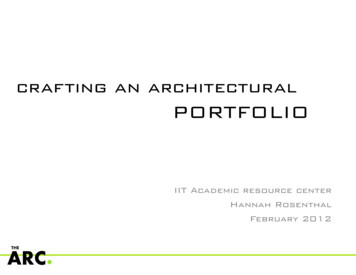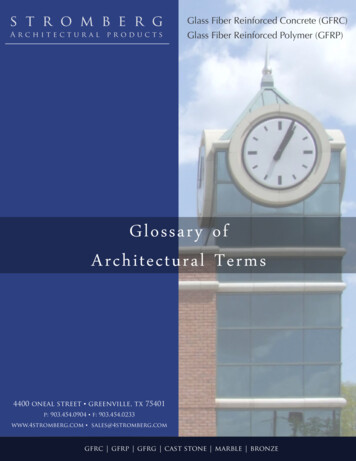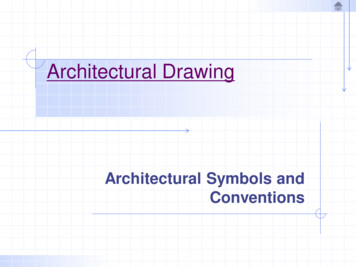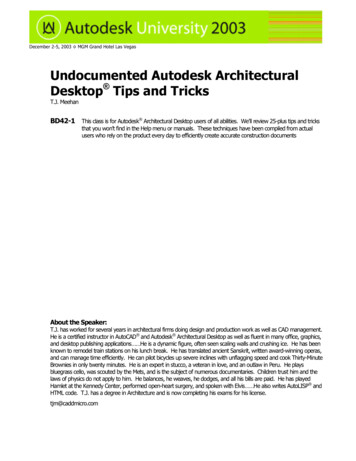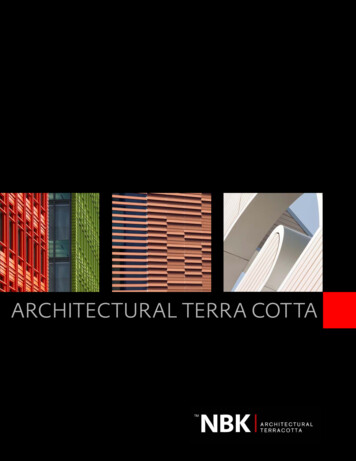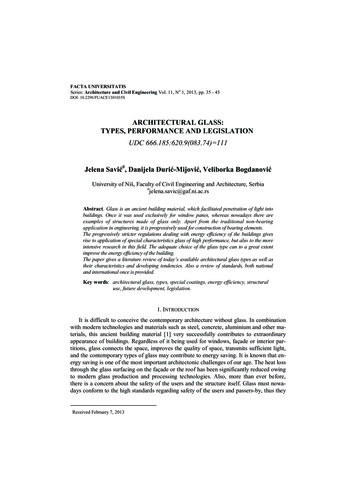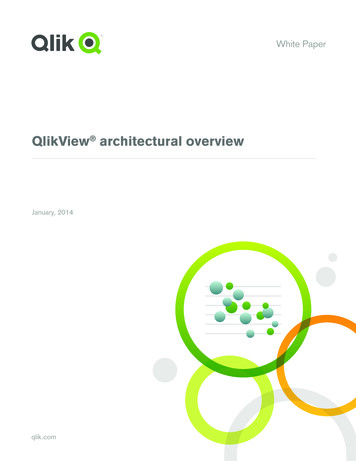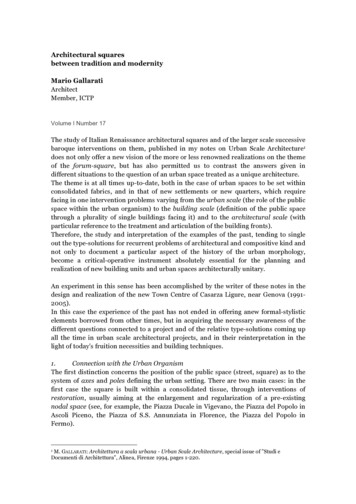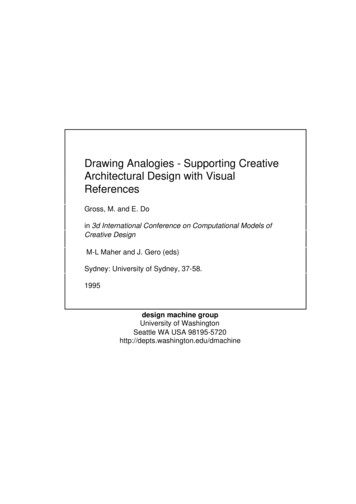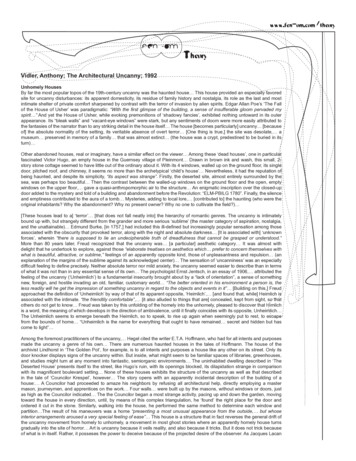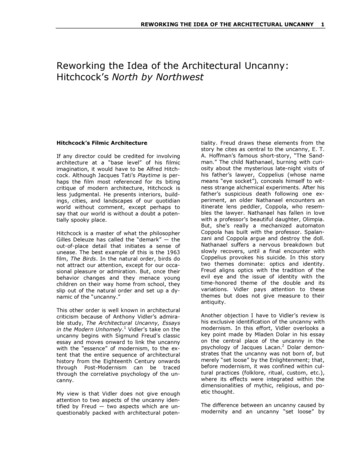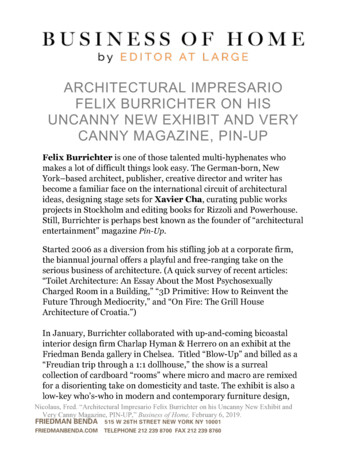
Transcription
ARCHITECTURAL IMPRESARIOFELIX BURRICHTER ON HISUNCANNY NEW EXHIBIT AND VERYCANNY MAGAZINE, PIN-UPFelix Burrichter is one of those talented multi-hyphenates whomakes a lot of difficult things look easy. The German-born, NewYork–based architect, publisher, creative director and writer hasbecome a familiar face on the international circuit of architecturalideas, designing stage sets for Xavier Cha, curating public worksprojects in Stockholm and editing books for Rizzoli and Powerhouse.Still, Burrichter is perhaps best known as the founder of “architecturalentertainment” magazine Pin-Up.Started 2006 as a diversion from his stifling job at a corporate firm,the biannual journal offers a playful and free-ranging take on theserious business of architecture. (A quick survey of recent articles:“Toilet Architecture: An Essay About the Most PsychosexuallyCharged Room in a Building,” “3D Primitive: How to Reinvent theFuture Through Mediocrity,” and “On Fire: The Grill HouseArchitecture of Croatia.”)In January, Burrichter collaborated with up-and-coming bicoastalinterior design firm Charlap Hyman & Herrero on an exhibit at theFriedman Benda gallery in Chelsea. Titled “Blow-Up” and billed as a“Freudian trip through a 1:1 dollhouse,” the show is a surrealcollection of cardboard “rooms” where micro and macro are remixedfor a disorienting take on domesticity and taste. The exhibit is also alow-key who’s-who in modern and contemporary furniture design,Nicolaus, Fred. “Architectural Impresario Felix Burrichter on his Uncanny New Exhibit andVery Canny Magazine, PIN-UP,” Business of Home, February 6, 2019.
featuring pieces by Wendell Castle, Gaetano Pesce, StudioEspaña, Soft Baroque and others.The ‘dining room’ from Felix Burrichter’s trippy new exhibit at Friedman BendaCourtesy of Friedman Benda, Photo by Timothy DoyonBusiness of Home spoke with Burrichter about “Blow-Up,” theuncanniness of children’s furniture and why Pin-Up isn’t cool or isit?Tell us about the origins of the exhibit.Every year [co-owner of Friedman Benda] Marc Benda has aJanuary show with a guest curator. Last year Mark McDonald did ashow on architects who design furniture. I saw the exhibit, and lovedthe Frank Gehry cardboard furniture pieces, so I had this idea to do ashow of all cardboard furniture, but it turns out that the Gehry piecesare the best ones. Most other cardboard furniture is for children,which made me think: There’s something kind of uncanny aboutNicolaus, Fred. “Architectural Impresario Felix Burrichter on his Uncanny New Exhibit andVery Canny Magazine, PIN-UP,” Business of Home, February 6, 2019.
children’s furniture, and in miniatures that can’t be used. Where thatoccurs is mostly in dollhouses.How did Adam Charlap Hyman’s firm get involved?Once I had the idea of transforming the gallery into a 1:1 dollhouse, Iasked Adam to join the team. I had known about his interest inminiatures—he’s been collecting them since he was little—so it was theperfect match. He took the basic idea and turned it into something Ididn’t remotely think was possible.Felix Burrichter Courtesy of Friedman Benda. Photo by Timothy Doyon.The exhibit is a dollhouse, but it doesn’t look like anydollhouse I can think of.Nicolaus, Fred. “Architectural Impresario Felix Burrichter on his Uncanny New Exhibit andVery Canny Magazine, PIN-UP,” Business of Home, February 6, 2019.
It’s not based on an actual dollhouse. Some of the colors reference asixties film, Blow-Up. The palette and general aesthetic is kind of ahybrid between an idealized Victorian home and a Barbie house.There’s a lot of playing with scale in the exhibit, some thingsare grotesquely oversized, some are comically small. Howdid you think about scale?In talking with each furniture designer, scale was the firstconversation we had. It’s something so familiar to people who work indesign, because you can’t always make a prototype in 1:1. Everyoneinvolved in the show immediately understood how, with a slightalteration to scale, the perception of the piece can completely change.[Designer] Katie Stout pulled out a project she had worked on atschool—a chair based on a dollhouse chair she had found; a “blownup” version of a dollhouse chair—which was perfect. Each designerand artist interpreted the concept in their own way.The exhibit has been described as “a hit on Instagram.” Wasthat a goal?It has been a hit! We had to do a photo shoot at the gallery the otherday, I never thought we would have to close it down on a Tuesdayafternoon, but it was full of people taking pictures of each other. Wehad to ask them to leave so we could do the shoot. Now I get tagged inall sorts of pictures of people who I don’t know.To be honest, I didn’t know until a week before the show went up justwhat it was going to look like in real life. All the drawings and vinylswere scaled one inch to one foot, so I had only seen miniatures. Once Isaw it go up, it dawned on me that people would take pictures of it,which is great—I like that—and we were debating whether we shouldhave a hashtag for the show. But we didn’t plan specifically for thereto be Instagram moments or anything.Nicolaus, Fred. “Architectural Impresario Felix Burrichter on his Uncanny New Exhibit andVery Canny Magazine, PIN-UP,” Business of Home, February 6, 2019.
A dollhouse-inspired chair by Katie Stout Courtesy of Friedman Benda and Katie Stout.Photo by Timothy DoyonOne thing I love about both your magazine and the exhibit isthe sense of humor. Where does that come from?I don’t know where it comes from—I, personally, have no sense ofhumor [laughs]. I think it really goes back to the reason why PinUp was started. I was miserable in a large corporate architectureoffice, and Pin-Up was always intended as a diversion. There’s adiscrepancy between going to school as an architect, and what youactually do in real life as an architect. I think Pin-Up was this vehicleNicolaus, Fred. “Architectural Impresario Felix Burrichter on his Uncanny New Exhibit andVery Canny Magazine, PIN-UP,” Business of Home, February 6, 2019.
that allowed me to continue exploring what I had liked so much aboutstudying architecture.It is unique—there’s not much humor in most design andarchitecture publications.When Pin-Up was started in 2006, the concept of “architecturalentertainment” seemed a lot more frivolous—it almost felt likeblasphemy. The idea is to have fun with it. There’s enoughpublications that deal with the subject seriously. And having alighthearted tone allows us to address a wider range of subjects, notjust architecture.I hope you won’t take this the wrong way, but the magazineis very cool. Do you ever see a pitch or an article and think,This isn’t cool enough for Pin-Up?For that you’d have to define “cool.” That’s a hard question, but Iwould say no. Cool is not a really a criteria—we did a story on doiliesin our current edition, and doilies are the opposite of cool. I think a lotof it is packaging; we work with a lot of great designers, and with greatdesigners you can make almost anything look cool—even doilies.What have been the biggest challenges of Pin-Up’s 10-yearrun, and do you ever consider going all-digital?Since we only come out twice a year, it is a luxury object, and I like itas such. Some people have said, “You should come out four times ayear!” I say, “No, that defies the purpose of the magazine.” So muchattention to detail and love for the object goes into each issue that it’sreally hard to reproduce something equally engaging online.We really enjoy the different pace of print medium. We’ve been doingit for 12 years and there have been so many moments when wethought, Does this still make sense in this day and age?Time has proven us right so far. The other thing is that our revenuelargely comes from print. There’s something about the limitedexposure of a printed publication that actually makes it desirable. ForNicolaus, Fred. “Architectural Impresario Felix Burrichter on his Uncanny New Exhibit andVery Canny Magazine, PIN-UP,” Business of Home, February 6, 2019.
so many years, the conversation has been about reach, but it’s notabout that entirely. That spirit of exclusivity, being able to speak to aspecific person as opposed to a bunch of people—that’s very desirable.What other design publications do you read?I love Apartamento. We’re very close, we’re all friends, and we watcheach other very closely. We started around the same time, and it’s veryrewarding to see that level of quality actually prevailing.Nicolaus, Fred. “Architectural Impresario Felix Burrichter on his Uncanny New Exhibit andVery Canny Magazine, PIN-UP,” Business of Home, February 6, 2019.
Nicolaus, Fred. “Architectural Impresario Felix Burrichter on his Uncanny New Exhibit and Very Canny Magazine, PIN-UP,” Business of Home, February 6, 2019. ARCHITECTURAL IMPRESARIO FELIX BURRICHTER ON HIS UNCANNY NEW EXHIBIT AND VERY CANNY MAGAZINE, PIN-UP Felix Burrichter is one of those talented multi-hyphenates who makes a lot of difficult things look easy. The
